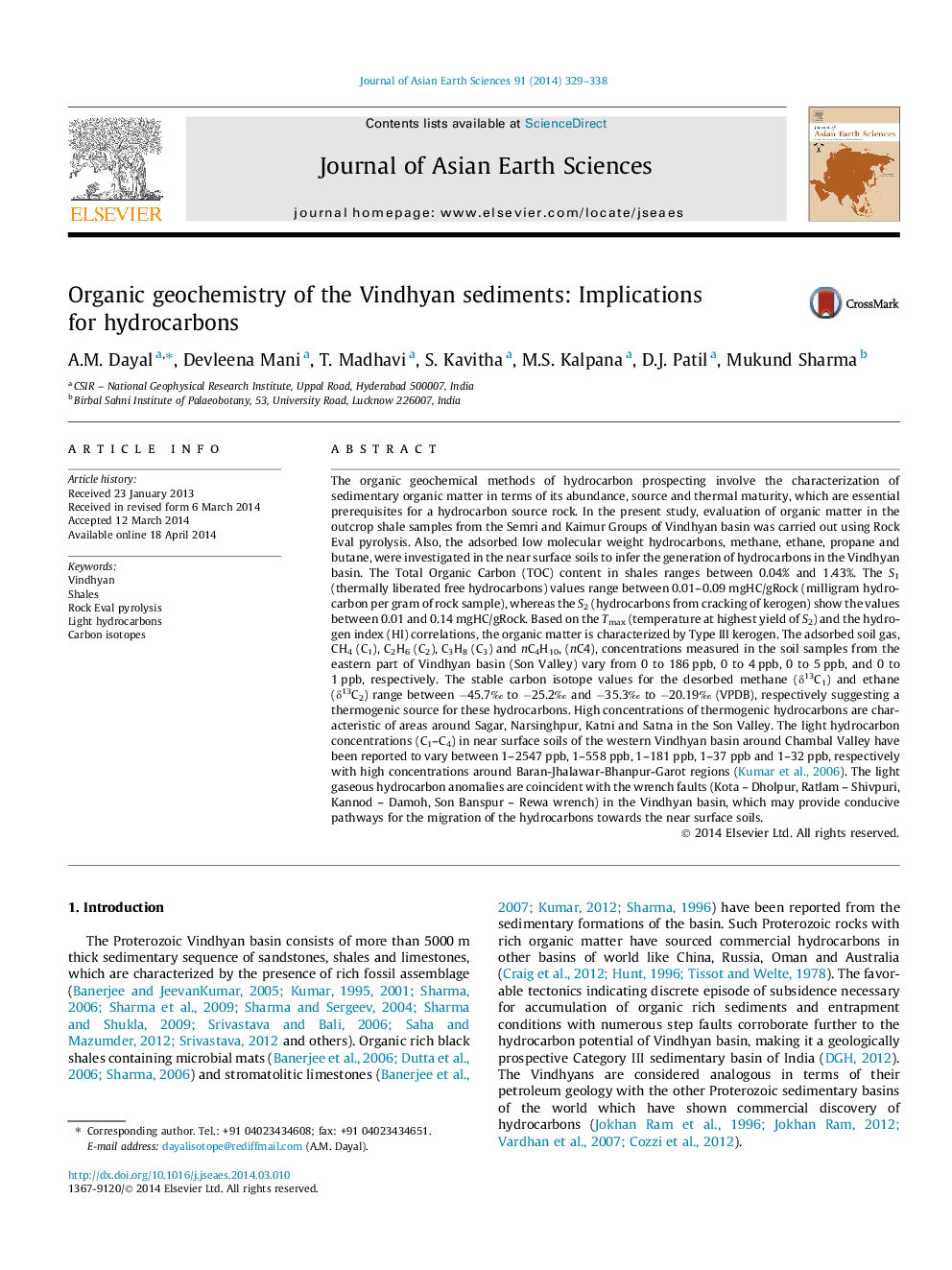| کد مقاله | کد نشریه | سال انتشار | مقاله انگلیسی | نسخه تمام متن |
|---|---|---|---|---|
| 4730569 | 1640377 | 2014 | 10 صفحه PDF | دانلود رایگان |
• Rock Eval pyrolysis data of Vindhyan shales shows presence of Type III kerogen.
• Elevated levels of light gaseous hydrocarbons of thermogenic origin observed.
• Wrench faults in basin provide preferential migratory pathways for hydrocarbon microseepage.
The organic geochemical methods of hydrocarbon prospecting involve the characterization of sedimentary organic matter in terms of its abundance, source and thermal maturity, which are essential prerequisites for a hydrocarbon source rock. In the present study, evaluation of organic matter in the outcrop shale samples from the Semri and Kaimur Groups of Vindhyan basin was carried out using Rock Eval pyrolysis. Also, the adsorbed low molecular weight hydrocarbons, methane, ethane, propane and butane, were investigated in the near surface soils to infer the generation of hydrocarbons in the Vindhyan basin. The Total Organic Carbon (TOC) content in shales ranges between 0.04% and 1.43%. The S1 (thermally liberated free hydrocarbons) values range between 0.01–0.09 mgHC/gRock (milligram hydrocarbon per gram of rock sample), whereas the S2 (hydrocarbons from cracking of kerogen) show the values between 0.01 and 0.14 mgHC/gRock. Based on the Tmax (temperature at highest yield of S2) and the hydrogen index (HI) correlations, the organic matter is characterized by Type III kerogen. The adsorbed soil gas, CH4 (C1), C2H6 (C2), C3H8 (C3) and nC4H10, (nC4), concentrations measured in the soil samples from the eastern part of Vindhyan basin (Son Valley) vary from 0 to 186 ppb, 0 to 4 ppb, 0 to 5 ppb, and 0 to 1 ppb, respectively. The stable carbon isotope values for the desorbed methane (δ13C1) and ethane (δ13C2) range between −45.7‰ to −25.2‰ and −35.3‰ to −20.19‰ (VPDB), respectively suggesting a thermogenic source for these hydrocarbons. High concentrations of thermogenic hydrocarbons are characteristic of areas around Sagar, Narsinghpur, Katni and Satna in the Son Valley. The light hydrocarbon concentrations (C1–C4) in near surface soils of the western Vindhyan basin around Chambal Valley have been reported to vary between 1–2547 ppb, 1–558 ppb, 1–181 ppb, 1–37 ppb and 1–32 ppb, respectively with high concentrations around Baran-Jhalawar-Bhanpur-Garot regions (Kumar et al., 2006). The light gaseous hydrocarbon anomalies are coincident with the wrench faults (Kota – Dholpur, Ratlam – Shivpuri, Kannod – Damoh, Son Banspur – Rewa wrench) in the Vindhyan basin, which may provide conducive pathways for the migration of the hydrocarbons towards the near surface soils.
Journal: Journal of Asian Earth Sciences - Volume 91, September 2014, Pages 329–338
